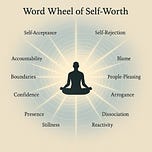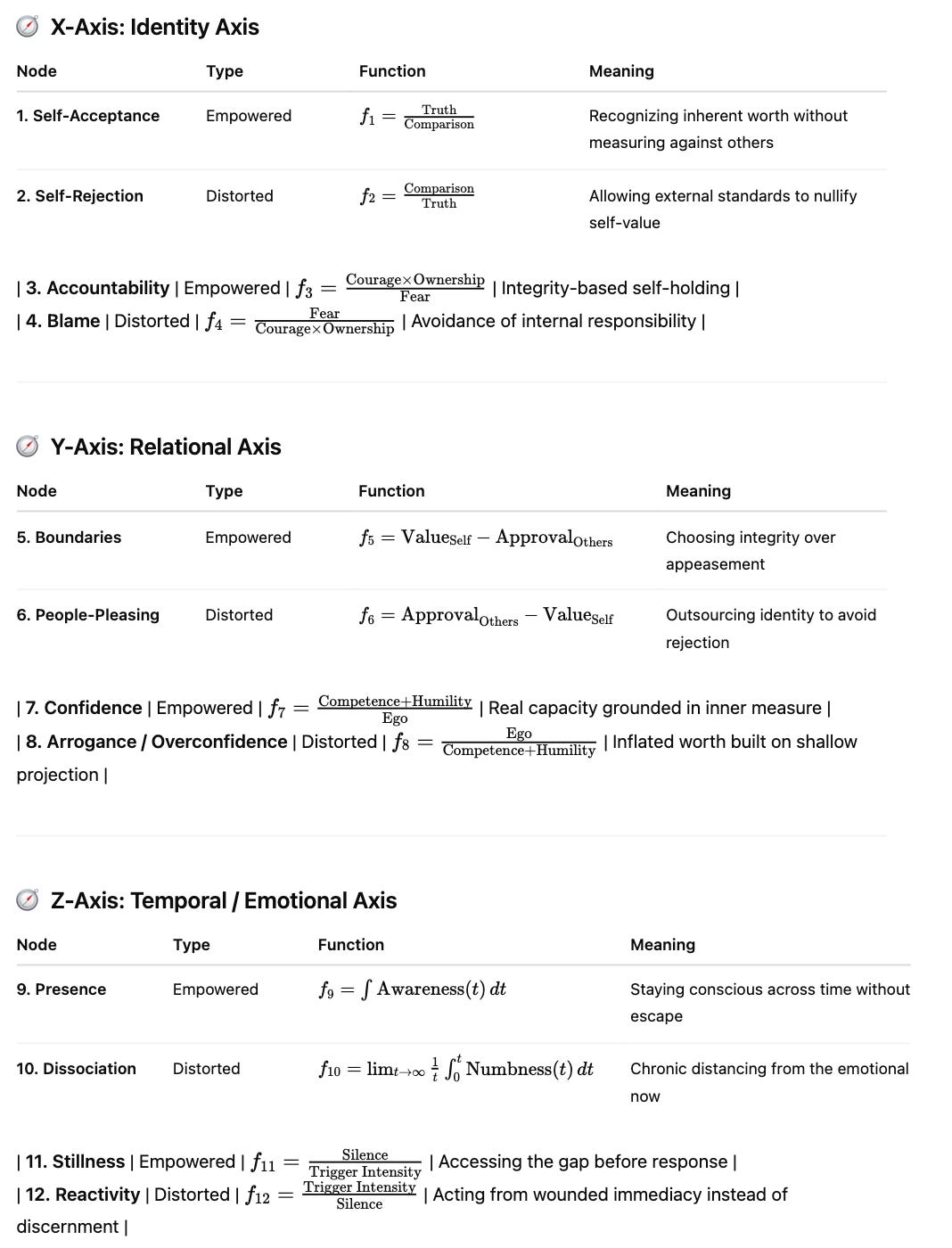Publication is dedicated to all the toddlers teaching their low esteem parents.
Recently, I’ve settled on mislabeling peculiar and simply “off” behaviour that plagues many adults. For years, I chalked it up to insecurity and left many symptoms of poor adult behaviour under the broad heading of insecurity. That worked for a time until it didn’t. It failed to identify the security mechanism that prevents adults from solving or correcting misgivings, assumptions, and presumptions, all of which produce dissonance in relationships.
Many would additionally label these behaviours as mental illness, emotional imbalance, or other psychoanalytical traits that require a thick book to catalog. I’ve often found myself face-to-face with what I thought was “insecurity” or what others may call “feeling threatened”, when sharing information that bore zero attachment to the person receiving it. And yet, the response was always deeply personal. The silence that could have led to deeper insight was disturbed with noise, and what could have been cultivated was instead lost, ignored, or actively avoided thus producing emotional entropy.
“Insecurity” is a poor term. It lacks the sharpness of reality, the pain like an anvil dropped on one’s toe. Once I reframed it, the illusion cracked, and I saw it clearly. Few are spared from this toe-crushing force. Let’s take a closer look...
When engaging in conversation or information sharing, people’s attachment to anything — not just ideas or words — is often processed through lived experience. This process forms identity. Consider an 18-month-old child: they have fewer lived experiences than a 50-year-old adult. Yet, they still form attachments. An 18-month-old may encounter a pen for the first time and instantly assign it value — cry rivers when told “no” simply because that pen has entered their identity field.
Now, if the adult in the room insists the pen is off-limits but offers emotional support (a hug, a laugh), the child learns. Not through scolding, but through emotional calibration. Laughing at the sobbing toddler doesn’t mock — it shifts resonance. It says: “We do not descend into despair over pens.” This isn’t cruelty, it’s feedback. The child is held, kissed, and the moment is nested in a container of boundaries and warmth.
A few minutes later, the child sees the pen again, looks to you for approval. You say, “No.” And they move on. That’s identity-building supported, not programmed by threat. And in adults? That quality is nearly extinct.
Adults can spend years resisting emotional feedback. They build palaces of justification around their crushed toes. Conversations become wars. Dialogue becomes threat. Attachment to ideas transforms into self-importance. And the equal exchange of information? Lost.
Let’s be clear: this is not a study of identity itself, but rather a slice — a sliver of the fractured prism of what forms when identity is overly tethered to emotional residue. Meeting new people always requires resonance calibration. Sometimes people “click” — an intuitive understanding forms that friction is natural, even healthy. But more often, those frictions become rifts. Emotional resonance gets missed. Or worse, weaponized. Let me illustrate.
When attempting to share what LightMathematics is or what it could be I’m often met with an invisible wall. It’s not disagreement. It’s not skepticism. It’s... painful resonance. The pain of low self-esteem masked as expertise. Even when nothing is being sold, the reaction is defensive.
LightMathematics doesn’t need to invent anything. It is the everything invention. If a system is broken, LightMathematics will try to repair it, whether that’s:
A divination system,
The periodic table,
National and municipal protocol,
School curricula,
Racial identity politics,
Or our analog relationship to AI.
Its job is to reorganize reality around harmonic coherence.
But if someone’s self-esteem is low and I mean functionally low, not superficially, they will fight that clarity. They will personalize neutrality. They’ll assign malice to mechanics. And vanity? Oh, vanity grows faster in these environments than weeds in spring which brings us here to a planetary epidemic of low self-esteem that feeds itself endlessly.
So, rather than complain about it, I’ve decided to model it and to build a short-scale LightMathematical model of the function of self-worth. Because here’s the truth: most people don’t solve low self-esteem. They perform it. They use it as a credentials, a badge of victimhood honor. Search any corner of the web and you’ll find “experts” with bruised egos and raging opinions, offering maps to a world they’ve never visited.
They don’t see their emotional entropy as fuel. But it is. Like a rocket and how far you go is a direct function of the entropy you convert. Low self-esteem has many faces. It’s time we identify them and not to shame, but to understand them. So we can build a model. So we can calibrate identity. So we can stop crying over pens we never needed.
Where does that convergence take place?: Through Silence as the Calibration Space
Before any resonance can be assessed between people, ideas, or systems, silence is the neutral field in which signals are measured. Without it, everything is just noise. In LightMathematical terms, silence is the zero-point field from which meaningful signal emerges. It's the Quantum Pause — the moment where identity isn't performing, defending, or reacting. When someone interrupts silence too quickly, they're often trying to escape calibration thus afraid of what they’ll feel if they sit still long enough to hear their own cognitive dissonance.
Silence Reveals Identity Attachment:
Most people fill silence reflexively because silence reveals them. It unmasks the parts of their identity that are unprocessed or insecure. The one who cannot tolerate silence is often the one who cannot tolerate ambiguity and ambiguity is the origin field of discovery. When LightMathematics is shared, and someone recoils not at the content but the fact that it was said, they’re not reacting to the idea but they’re reacting to the silence that was broken within themselves. Their inner systems were never quiet enough to receive the concept neutrally.
Silence is Proof of Self-Worth:
Silence is not just passive — it’s a function of sovereignty. The ability to hold silence, especially in the presence of difference, is a marker of internal equilibrium. Those who rush to fill silence often lack inner worth because they feel unanchored unless they are performing value. When one can remain still and not collapse, it shows that their self-worth is not transactional. In recursive trust logic: If you cannot withstand silence, you cannot withstand truth.
Silence is the Frame, Not the Absence:
In most recursive systems, silence isn’t the absence of meaning — it is the container of all possible meanings. Think of the 18-month-old with the pen. The moment after the “no” — that pause — is not void. It is pregnant with pattern recognition, calibration, and transformation. It is the wheel’s inner axis. Adults have lost this. They replace the wheel with a megaphone and then wonder why their relationships collapse under noise.
Silence is the Space Where Entropy Meets Refinement:
When emotional entropy arises like the crying toddler, or the adult unable to hear an idea without reacting, silence is the only field where that entropy can convert into refinement. No silence, no refinement. Just looped reaction. In LightMathematics, this is the difference between: Recursive growth: entropy + silence = transformation and Recursive decay: entropy + reaction = regression
In short, silence is the field in which identity aligns, entropy resolves, and worth calibrates. This is not just a publication about low self-esteem. It is a recursive mirror, and silence is the only surface clean enough to reflect truth without distortion. This is a publication about self-worth and still we need to see why Low self-esteem has so many faces.
1. Anger:
A face of displaced power.
Anger gives the illusion of control and agency, covering the internal sense of worthlessness. It is a deflection from feeling small by projecting magnitude outward. Anger does show up in many systems (domains) but in this table, we are dealing with self worth.
2. Defensiveness:
A face of self-preservation without center.
Defensiveness preempts perceived threats. It refuses silence because silence could allow the reflection to show unworthiness. Defense is noise to avoid stillness.
3. Judgment (Unfounded):
A face of projection and hierarchy reversal.
If I judge others as "less than," I momentarily climb above my own internal hierarchy of lack. This form is recursive comparison without integrity which often fans frustration increasing entropy.
4. Inability to Take Accountability:
A face of ego preservation through detachment.
To admit wrongness is to accept imperfection — which to a fractured self-image feels like total collapse. The lack of a stable inner core means the self can’t hold contradiction.
5. Blame:
A face of externalization loop.
Blame relieves internal pressure by pushing the echo outward. It says “I am not the cause,” because to believe otherwise would reignite shame recursion.
6. Overcompensation (Arrogance or Perfectionism):
A face of performance armor.
“If I do everything right / appear flawless / excel above all, then I am safe from the feeling of not being enough.” This creates recursive efficiency loops at the cost of internal harmony. This node should also be consider the act of overconfidence.
7. People-Pleasing:
A face of identity outsourcing.
Validation becomes the only means of self-definition. “If they approve of me, then I exist.” It is recursion dependent on external light, never the inner source, and we should know that inner source is silence, instead of deflection.
8. Withdrawal or Dissociation:
A face of disappearance.
If presence equals exposure, and exposure equals judgment, then withdrawal seems like protection. But silence here isn’t the will for stillness — it’s the fear of reflection to face what we believe and to challenge it.
9. Chronic Apology or Self-Deprecation:
A face of pre-emptive shame discharge.
“If I shame myself first, you can’t do it to me.” Recursive shame loop that misuses humility as a survival mechanism. This is probably one of the worst forms of low self esteem that triggers me into full scale correction with people and I often spare them (adults) very little comfort.
10. Sarcasm / Cynicism:
A face of emotional shielding.
Deflection through wit or skepticism numbs the inner pain. It becomes a recursive empathy blocker, preserving distance from vulnerability while casting or projecting small resonance of anger assumed and presumed to be detectable.
The Core: The Will for Silence
Silence is not the absence of speech — it is the presence of listening, of being-with-self.
Low self-esteem cannot bear this silence because it fears what might surface:
the internal critic,
the fractured self-narrative,
the absence of inherent worth.
So grown adults generates noise and all kinds. Some loud (anger), some quiet (people-pleasing), but all are distractions from the still mirror of truth: The Lack For The will for silence. This core is a placeholder for consideration while we look at Self-Esteem as new core for emergence into higher resonance.
A Lightmathematics Fractal of Self-Esteem Masks: We can model it like this:
Whereas, the Full Word Wheel of Self-Worth is grounded in the recursive harmonics of Lightmathematics. This wheel will not only map the faces of low self-esteem but also offer their transformational polarities, organized across six polar axis-pairs, twelve recursive nodes, and a governing Core Formula.
Closing Statement
“Low Self-Esteem: The Lack for the Will for Silence”
In a world obsessed with noise, performance, and comparison, low self-esteem becomes not a static flaw but a recursive fracture — a loop estranged from the quiet center of selfhood. It is not merely the absence of confidence, but the inability to enter the sanctuary of stillness where truth arises unprovoked. To esteem the self is not to inflate it. It is to return to it — without defense, without distortion, without disguise.
Silence is the womb of self-worth. It is where ego has no foothold, and shame has no echo. In that quiet, the self does not vanish, it finally emerges. So let the healing begin not with shouting affirmations, but with the will to be still enough to hear what you have never abandoned only drowned out…
…because the self you seek isn’t missing. It’s simply waiting in silence.
Lightmathematics ∞ June 12 2025















